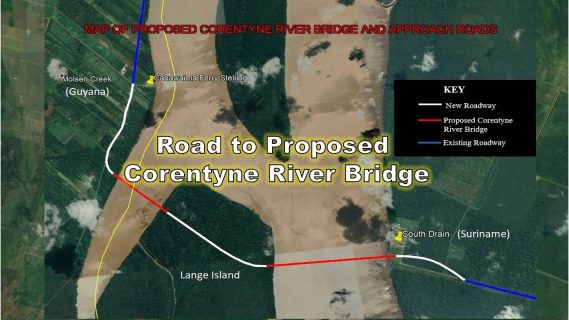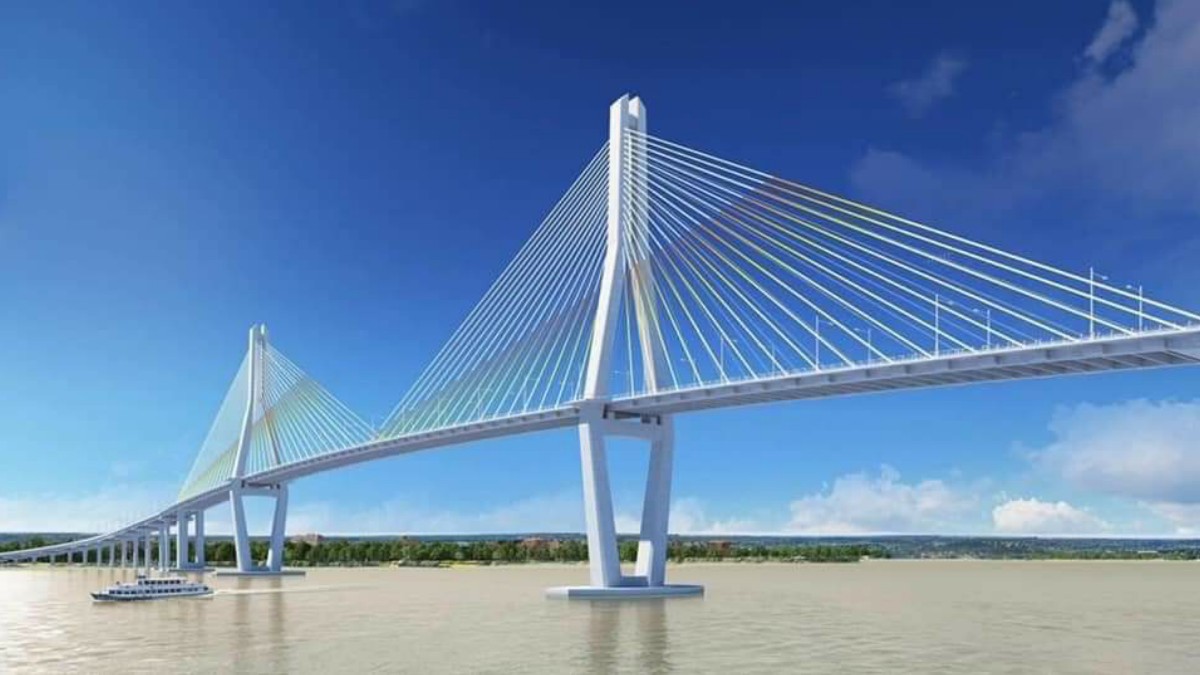Connecting Guyana and Suriname has been a hard task over a century. This is due to thick vegetation that places along their boundary on Corentyne River. A bridge would be proposed here, changing this connection to minutes from days. Yet, companies to undertake construction have specific difficulties arising from the remoteness of area and surrounding.
Guyana and Suriname expect to ensure unproblematic transit for labour, family visits, as well as products-supplies exchange through opening Corentyne crossing. Surinamese contractors and skilled laborers fill shortages in Guyanese housing construction within the border towns. One of the main foreseen for completion, this essential over-water connection would mark true economic cooperation between both countries.
Infrastructure Development Connecting Guyana and Suriname
Officials first considered Andrade Gutierrez and China Railway Construction Corporation. Two major foreign firms with a track record of constructing substantial bridges across the Amazon River and Yangtze River. But the choice of companies acquainted with the local climate and people is particularly attractive. It is highly likely that Guyanese developer CH&PA Group of Companies would collaborate with Suriname’s Tru-A-Way N.V. Aided by Spanish infrastructure firm Typsa for niche technical support.
The chosen consortium is irrelevant; the team must provisionally demonstrate capacity to work in dense rainforest and marshy terrain. They require the ability to bring in heavy machinery and materials into remote worksites with limited road access. Furthermore, contractors that show sustainable attributes and community involvement will be chosen by the bridge’s supporters for this initiative. The development of infrastructure linking Guyana and Suriname presents the huge promise. Not only this, but also environmental as well social challenges that require an awareness.
Balancing Project Success and Navigating Capricious Climate and Geography
The engineering challenges related to the bridge’s size stem from its length of more than 600 meters over the width of Corentyne River. Seasonal rainfall causing the River to swell adds more complications. Thus, requires resilient bridge foundations and drainage systems that can handle higher flood risk. Engineers also need to consider the high winds and even storm surges where the Corentyne meets with Atlantic Ocean.
Another huge challenge before traffic free flow between the two nations is connecting roads through over 100 kilometers of pristine forest around. In this sense, the construction consortium should clear paths through thick jungle and possibly span some of smaller tributaries that flow into Corentyne in rain season. To further complicate logistics, the operations stage construction materials and house temporary workers at these remote rainforest worksites.
Companies involved in the project have a stake on seeing it succeed, but they operate within settings that pose some of greatest challenges. The Corentyne crossing was also isolated from infrastructure. Thereby, exposing it to climate and geography that were capricious. Its completion will surely change Guyana-Suriname connections. However, developers are facing critical environmental challenges that must decrease before South American neighbors fully unite.

Large Funding for Connecting Guyana and Suriname: Investing in Connectivity
In mid-2022, leaderships of Guyana and Suriname decided to work on the Corentyne crossing officially. They have even optimistically set tentative groundbreaking for 2024 provided funding is secured. But according to the experts from the industry, even in best case scenarios it will take up at least 3 years to complete construction. This means full operation by the second half of 2027 provided all stays on track. However, the bridge’s opening would likely push closer to 2030 due to funding delays or any environmental impacts.
The bridge over Guyana and Suriname requires large investments in order to navigate through hard jungle wilderness. But linking these separated neighbors holds great prospects of building communities and offering lifeline to growing trade and economic integration. The selected construction teams undertake a highly substantial task. But one that may substantially reduce the pains of traveling between both nations in aggregate.
Conclusion
The challenges of building the Corentyne River bridge are enormous. From securing sufficient funds to having limited access in a jungle location that is prone to extreme weather conditions. However, successfully connecting Guyana and Suriname through this transit holds great socioeconomic possibilities. The initiative is expected to generate employment opportunities for local contractors and develop communities on both sides via interdependent economies. Moreover, lay a foundation upon which new broader-based mutual trade could develop. It takes vision, determination and patience of the supporters and developers to build such a bridge over Corentyne River. However, such serious work will effectively ease difficulties experienced. Like traveling between both states and enhance the spirit of cooperation as well as evolution among close enemies. One day this bridge will not only span over these green waters but also towards a brighter and more connected future for both Guyanese and Surinamese people.
Also Read: Guyana: Construction Commences at The Modern College of Medical Sciences
Also Read: Crucial Talks Ongoing Over Suriname’s Sapakara South-Krab Dagu Project Development
Also Read: Guyana: Construction Commences at The Modern College of Medical Sciences

